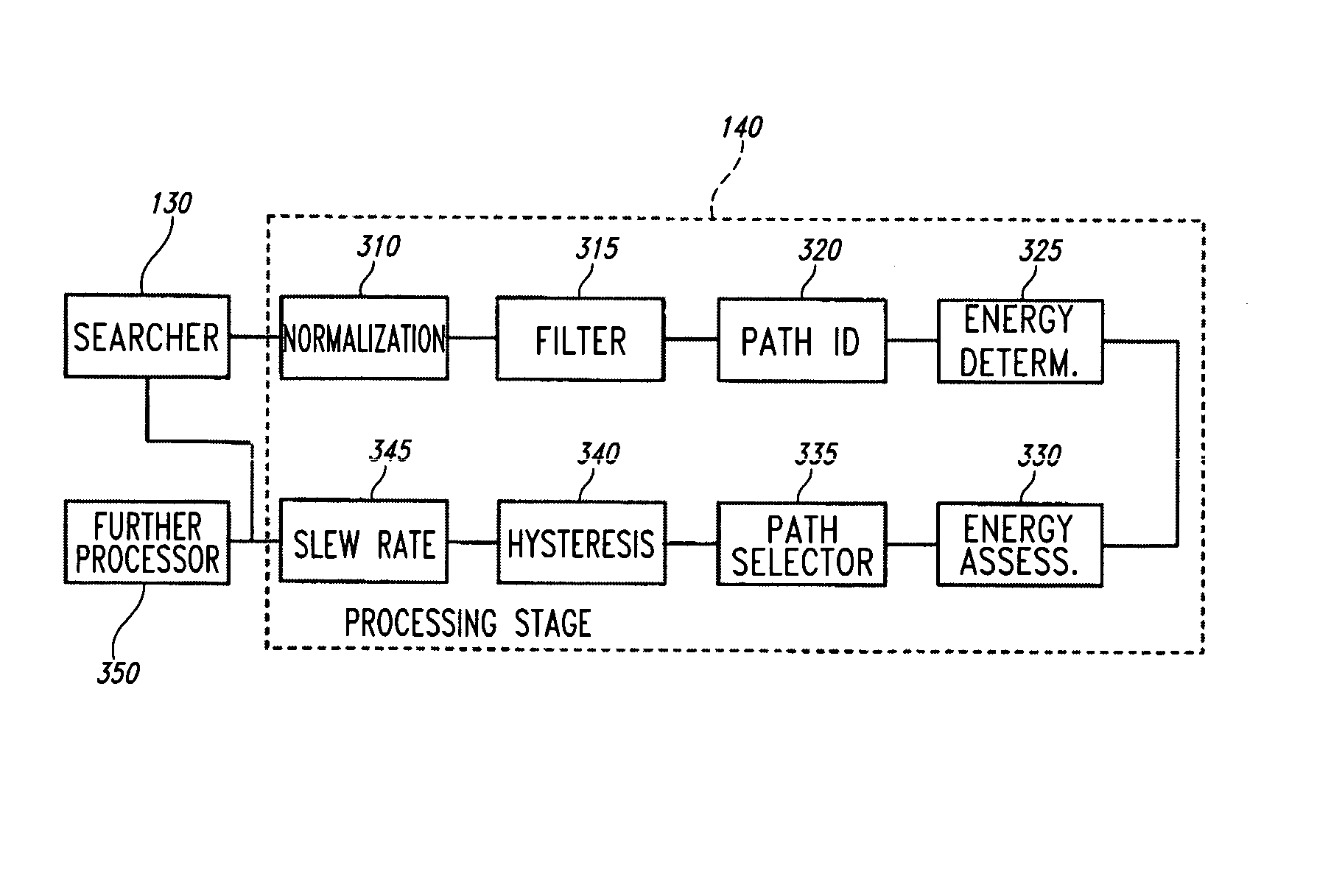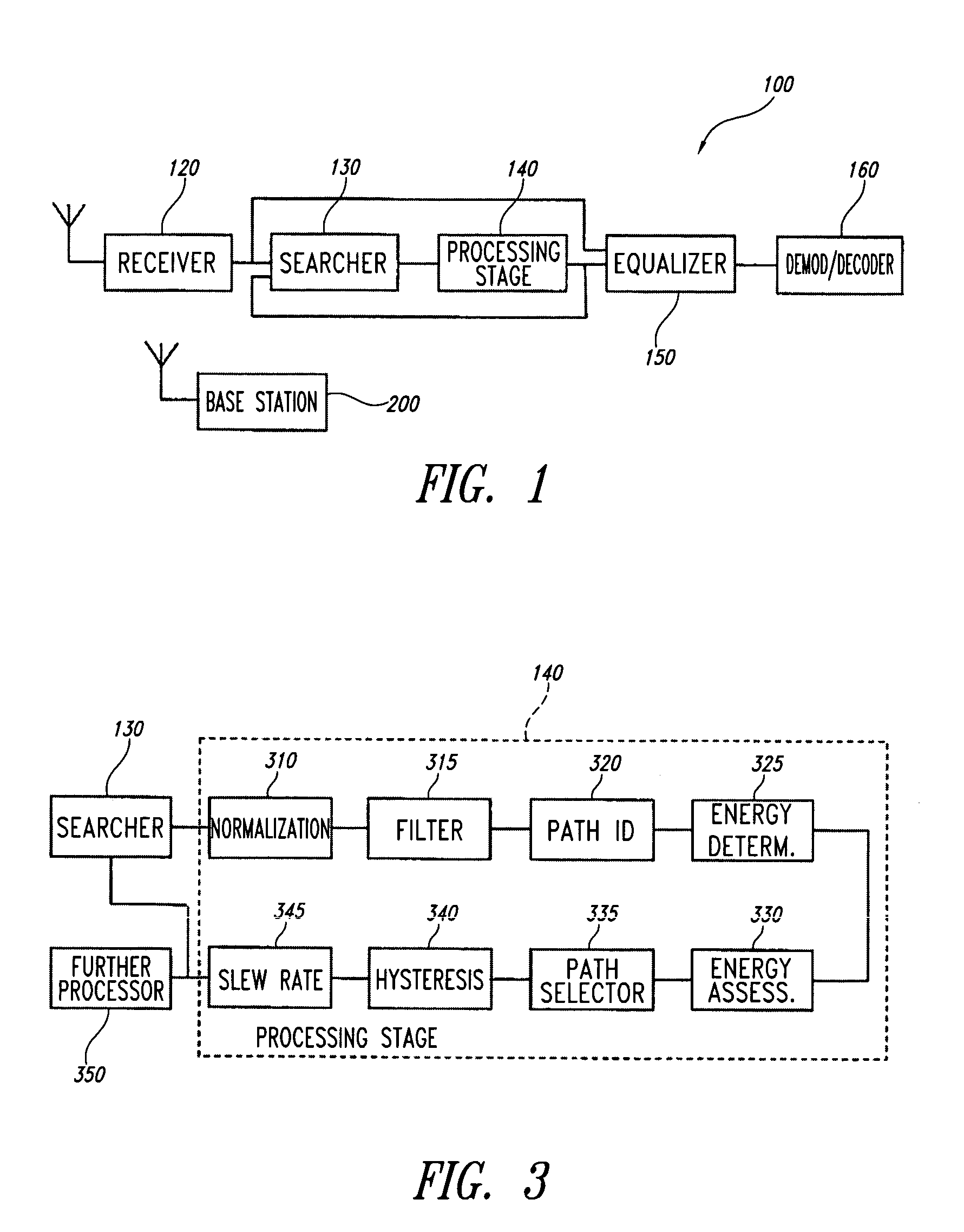First significant path detection
a path detection and significant technology, applied in the direction of pulse technique, amplitude demodulation, line-faulst/interference reduction, etc., can solve the problems of limited implementation of muds or ics in mobile stations, inter-code interference, inter-chip interference and inter-symbolic interference in symbols, etc., to reduce the effect of receiver gain variation, simple implementation, and improved performan
- Summary
- Abstract
- Description
- Claims
- Application Information
AI Technical Summary
Benefits of technology
Problems solved by technology
Method used
Image
Examples
Embodiment Construction
[0045]Referring to FIG. 1, there is illustrated a block schematic diagram of a UMTS mobile communication system comprising a base station 200 and a mobile station 100. Only the elements of the mobile station 100 relevant to the understanding of the present disclosure are illustrated. The mobile station 100 comprises a receiver 120 coupled to an antenna for receiving a signal from the base station 200. This signal is a multipath signal (e.g., a multipath Code Division Multiple Access—CDMA—signal), comprising a plurality of signal components each received via a different signal path due to reflections. The receiver 120 is adapted to receive radio frequency signals, convert the radio frequency signals to baseband or to a low intermediate frequency, and to apply channel filtering to reject unwanted signals occurring at other frequencies. The resulting signal is delivered on an output of the receiver 120 which is coupled to an input of a searcher 130 which processes the signal to provide...
PUM
 Login to View More
Login to View More Abstract
Description
Claims
Application Information
 Login to View More
Login to View More - R&D
- Intellectual Property
- Life Sciences
- Materials
- Tech Scout
- Unparalleled Data Quality
- Higher Quality Content
- 60% Fewer Hallucinations
Browse by: Latest US Patents, China's latest patents, Technical Efficacy Thesaurus, Application Domain, Technology Topic, Popular Technical Reports.
© 2025 PatSnap. All rights reserved.Legal|Privacy policy|Modern Slavery Act Transparency Statement|Sitemap|About US| Contact US: help@patsnap.com



